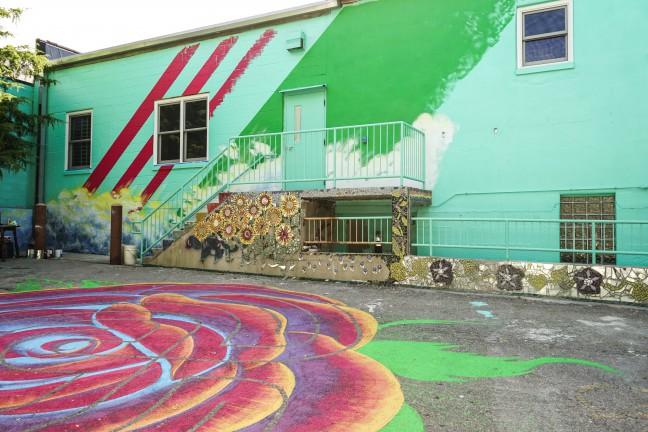Local artists and community members are working to create an art installation at Madison’s Social Justice Center dedicated to “victims of violence.”
The project will depict victims, including Tony Robinson, as silhouettes doing the activities they loved. Community members and victims’ families continue to work on the installation, which features a mural, a mosaic and painted labyrinth.
Robinson was killed six months ago in Madison, sparking community protests and conversations on racial inequity in the city.
Sharon Kilfoy, a local muralist, said the project was a reaction to Robinson’s death, but also commemorates six other victims of violence, but not all were killed in officer-involved incidents.
“When [Robinson] was killed my first reaction was ‘This is too close to home’ and then the next day it was ‘No, this is home’ … it’s real personal to a lot of Willy Street people,” Kilfoy said. “This was one of our kids.”
The mural will also depict Paulie Heenan, who was killed by Madison police in 2012, Brendan Scanlon, a local graffiti artist killed by police in Chicago and Shaina Davenport, who died as a result of gun violence as a child in 1999.
It will also feature Conor Dunleavy, who died at 20 in 2012 when a drunken driver hit his car and Fredrica Hanger, who was fatally shot last year.
Another leading artist, Kelty Carew, said most of the Willy Street community knows each victim, but she hopes those who pass by and do not know them still feel a connection. Carew also works with families to create gravestones and monuments for lost loved ones, so she is used to working with people in emotional situations.
Carew said the families of the deceased have been working closely with the artists on the design, and occasionally with hands-on work. She said the collaborative nature of the mural has made the process take far longer than it would have if there were only a single artist.
“We’ve gone about it in a way that honors everyone’s feelings while also embracing the sentiments too, despite it being a peace mural,” Kilfoy said. “An important part of it is that peace is the ideal but most of the families here are not at peace.”
Carew said the project has already created some profound relationships between artists, families and the community.
Kilfoy said the installation will also include a photo component which they have dubbed “The Hope,” and will feature friends and family members of those who have been killed by police.
Kilfoy hopes the installation will bring some measure of comfort to the families of the victims, however slight. She said artists are hoping to finish the project in time for a public viewing on Oct. 5, but she does not want to rush any of the artwork.
“For all of us as artists, we feel it’s some of the most important work we’ve ever done … It’s given these families some real tangible place to put their energy and that’s been a wonderful thing,” Kilfoy said.


